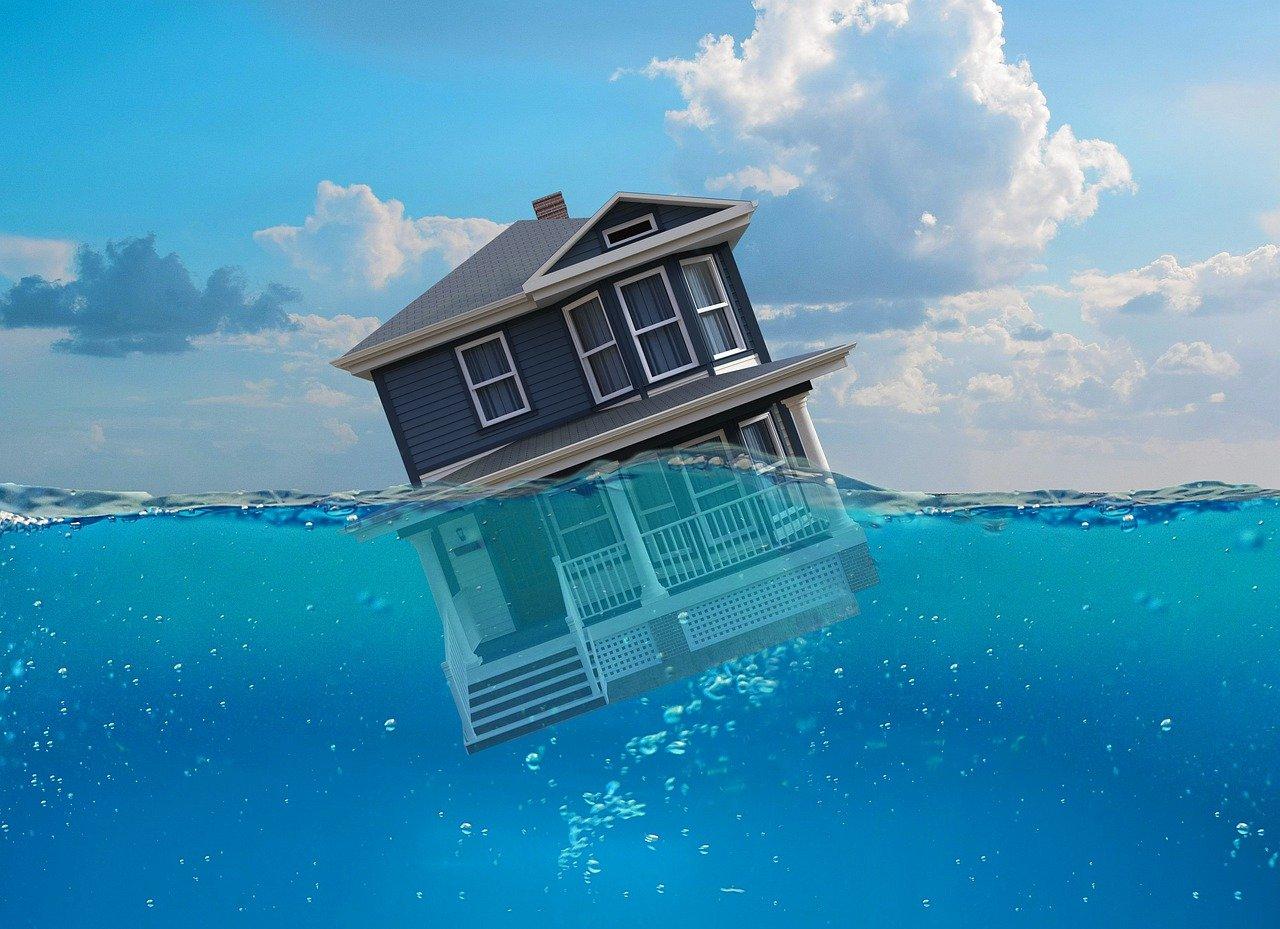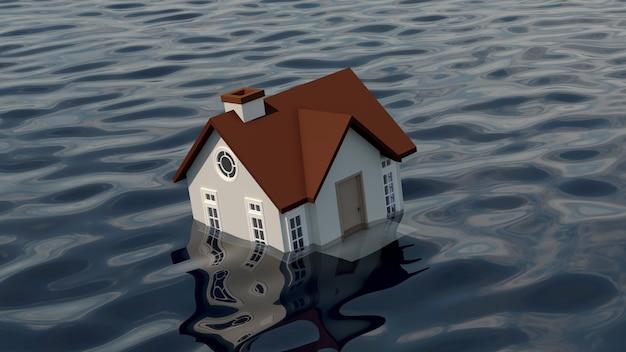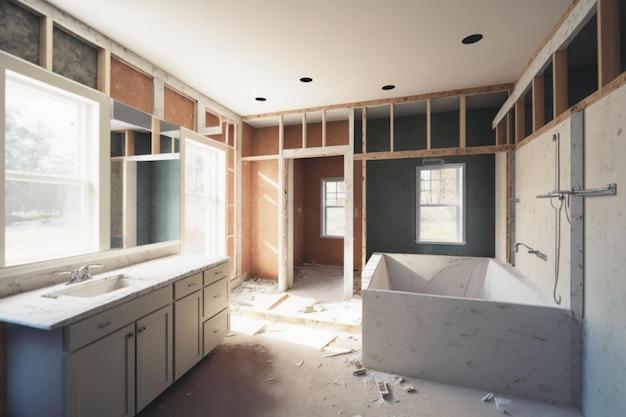Have you ever noticed your house sinking on one side? It could be a sign of a sinking foundation. A house foundation is an essential part of any building, keeping it stable and level. However, environmental factors like soil type, weather conditions, and water damage can cause a foundation to sink. If left unattended, a sinking foundation could lead to costly repair bills. In this blog post, we’ll explore the causes of sinking foundations, how to identify its signs, and what to do if your house foundation is sinking. We’ll also discuss if sinking house foundations are covered by insurance. So, stay tuned!
Signs That Your House Foundation is Sinking
Have you noticed your house floors slanting toward one direction? Or have you found cracks on your walls, doors, and windows? These could be signs that your house foundation is sinking. Here are a few other signs to look out for:
Uneven floors
The first sign that your house foundation might be sinking is a visible unevenness in floors, or even ground. If you’ve noticed bowls or ripples in your flooring, that is a clear red flag. If your floors resemble the rolling hills of the prairie, then there might be an issue beneath it.
Windows and doors
Another sign that your foundation is sinking is misaligned windows and doors. If your windows or doors don’t fit or lock properly, there’s a good chance that they’ve become warped. Sure, you can blame it on the weather or your ever-increasing muscle mass, but it’s more likely that your foundation is the cause.
Cracks
Are there cracks in your walls? If so, they could be an indication that your foundation needs some repair. Even small cracks can lend clues to deeper problems that could be responsible for your homes settling. So, keep your eyes peeled, and look out for anything that seems out of the ordinary.
Water damage
If you notice water pooling around your house or in your basement, or water stains on your walls or ceiling, it could be another sign that your foundation is sinking. Water damage can cause walls and floors to become weak, which can create shifts in your foundation.
Sloping floors
If you’ve noticed that your refrigerator is rolling away from the wall, or all of your furniture is congregating in one corner of your living room, it’s a sign that your floors are sloping. Sloping floors, just like uneven ones, can be a sign of a shifting foundation.
If you’ve noticed any of these signs around your house, it’s time to take action. Although you might be tempted to ignore these issues, getting a professional to check out your home’s structural integrity can literally save your foundation and your wallet! Remember, a sound foundation equals a sound house.
My House is Sinking on One Side
If your house is sinking on one side, don’t panic, you are not alone. Many homeowners have faced the same issue, and it can happen for several reasons. Some of the most common reasons include soil erosion, improper drainage, plumbing problems, and foundation issues.
Signs of a Sinking House
Before we dive deep into the causes and solutions, let’s discuss some signs that indicate your house is sinking on one side:
- Cracks in the walls, floors, and ceilings
- Sloping floors
- Stuck doors and windows
- Uneven exterior walls
- Water damage in the basement or crawl space
If you notice any of these signs, it’s essential to take immediate action and address the issue to prevent further damage.
Causes of a Sinking House
Several factors can cause your house to sink on one side. One of the most common reasons is an improperly laid foundation. If the foundation isn’t level, it can cause one side of the house to sink over time.
Another reason is soil erosion, which can occur due to heavy rainfall or other natural disasters. If the soil beneath your house is washed away, it can create a void, causing your house to sink.
Solutions to a Sinking House
The best solution for a sinking house depends on the cause of the issue. It’s best to consult with a professional foundation repair contractor for a comprehensive solution.
If the sinking is caused by soil erosion, the contractor may need to inject grout or foam underneath the foundation to fill the void and level the house. For foundation issues, they may use piers or helical anchors to lift and stabilize the foundation.
In some cases, the solution may be as simple as fixing the drainage or plumbing issue to prevent further damage to the foundation.
A sinking house on one side can be a daunting problem. However, with a little patience and the right solution, you can fix it within no time. Remember, addressing the issue promptly is crucial to prevent further damage, so don’t wait till it’s too late.
Now that you have some knowledge about this topic let’s hope your house stands up like a champ without sinking.
House Sinking Covered by Insurance
Are you a homeowner with a sinking house foundation? Fear not, for there may be insurance coverage available to help you out of this sticky situation.
Do All Insurance Policies Cover House Sinking
Sadly no, not all insurance policies cover house sinking. Often, homeowners need to purchase additional coverage or rider for their policy to include such damages. So, before you start dreaming of a new foundation, make sure to check what your insurance policy covers (and doesn’t).
What Kind of Insurance Will Cover House Sinking
You may be wondering what type of insurance covers house sinking. “Sinkage” is typically covered under homeowners’ insurance policies as a form of structural damage or collapse. However, the cause of the sinking, such as an earthquake, flood, or natural disaster, will impact the coverage terms and the amount of reimbursement the homeowner may receive.
How to Make a Sinking House Foundation Claim
Should your house sinking be covered under your insurance policy, the next step is to file a claim. Be sure to document the damage, take photos, and obtain a written estimate from a foundation repair professional. You will also need to thoroughly review your policy to ensure that you understand the deductible, coverage limits, and any exclusions that may apply.
Take Action Immediately
If you suspect your house foundation is sinking, it is important to take action as soon as possible. A sinking foundation may lead to larger problems, such as cracked walls or uneven floors, and can even affect the home’s overall structural integrity. Investing in additional insurance coverage or filing a claim may seem daunting, but it may ultimately save you from further headaches down the road.
In conclusion, insurance coverage for sinking house foundations varies from policy to policy. So, check what is covered under your current policy carefully, and invest in additional coverage if necessary. Remember, the sooner you take action, the better off you will be.
Sinking House Foundation Repair Cost
As the famous saying goes, “home is where the heart is”, but what happens when your home’s foundation is sinking? It can be a homeowner’s worst nightmare. Some signs of a sinking foundation include cracks on the walls, uneven floors, or jammed windows and doors. If that’s the case, you might need a foundation repair, and you’re probably wondering: How much does it cost?
Factors that Affect Repair Cost
Several factors can affect the cost of repairing a sinking foundation. The first one is the type of foundation your home has. Is it a slab foundation, crawl space, or basement? The repair cost for each one of these types might vary.
Another factor is the extent of the damage. The more severe the damage, the more expensive it becomes to repair. It might require more materials and labor to fix the issue.
Lastly, the location you live in can also affect the cost. In some areas, labor and materials are cheaper, while in others, they might be more expensive.
Repair Options
There are several repair options for a sinking foundation. The most common ones are:
-
Piering: A process where piers are installed under the foundation to lift and support it. The cost of piering can range from $1,000 to $3,000 per pier.
-
Slabjacking: A process where a grout mixture is pumped under the foundation to lift it. The cost of slabjacking can range from $500 to $1,300.
-
Sealing: A process where cracks are sealed to prevent further damage. The cost of sealing can range from $2,000 to $10,000.
DIY or Hire a Professional
Repairing a sinking foundation requires a certain level of expertise and equipment. It’s not a DIY project that you can do on your own. It’s better to hire a professional foundation repair company to do the job for you. They have the necessary skills, tools, and equipment to complete the job safely and efficiently. Attempting to do it on your own might lead to further damage and higher repair costs.
Repairing a sinking foundation is not something a homeowner should take lightly. The cost of repair can vary depending on several factors, such as the type of foundation, extent of damage, and location. It’s essential to hire a professional foundation repair company to fix the issue safely and efficiently. If you’ve noticed any signs of a sinking foundation, don’t hesitate to get it fixed. It’s better to spend the money on repair now than to wait and face more significant costs later on.
What’s Causing Your House Foundation to Sink
As much as we love sinking into our plushy couches on a lazy evening, we definitely don’t want our house foundations sinking. But unfortunately, it’s a common problem that homeowners face. In this subsection, we’ll be looking at the many culprits that can cause a house foundation to sink.
Soil Type
Ah, soil. The very foundation of all construction projects. Different soil types have varying abilities to hold and distribute weight. Some are looser and more porous than others. Clay soils are particularly notorious for causing foundation problems as they retain moisture, expand, and cause the foundation to heave, while dryness causes them to crack and shrink.
Water Damage
When it comes to moisture and siting, the foundation of your house would love to play hard to get. Water can cause the soil beneath the foundation to expand and contract, leading to foundation movement and settling. Poor grading and drainage issues can cause water to accumulate around the foundation, leading to significant damage.
Trees and Vegetation
Trees may be great for adding charm and shade to a home, but their roots can have disastrous effects on a foundation. Large trees and vegetation near a foundation can siphon away moisture, causing the ground to dry up and leading to foundation settling. Furthermore, the roots can grow under and around the foundation and, with time, undermine its structural integrity, causing the foundation to crack and shift.
Age and Natural Wear
Like everything else, a house foundation ages and can wear out over time. This is particularly true for older homes with weaker foundations. The foundation may have been built on inferior materials or poorly constructed to begin with, making it more prone to sinking over time.
Faulty Construction
A poorly constructed foundation can cause a lot of problems in the future. Poor workmanship can result in inadequate foundation depth and uneven settlement, leading to cracks and sinking. Additionally, using subpar materials can cause the foundation to become unstable, leading to sinking.
You now know what could cause your foundation to sink. But how do you prevent it? That’s a topic for another day. Stay tuned!
Does Insurance Cover Sinking Foundation
If you fear your house is sinking into the ground, and you’re worried about footing the bill, you might want to know if your homeowners’ insurance policy covers this type of damage. Unfortunately, the answer is not a straight yes or no.
Sink or Swim: The Limits of Your Coverage
In most cases, homeowners’ insurance policies will cover sudden and accidental damage, including sinkholes, which can cause foundation problems. However, it won’t cover problems resulting from the normal wear and tear of your home or long-term exposure to environmental factors.
Your Policy’s Got You Covered… Mostly
While coverage will vary from policy to policy, you’ll need to check if your policy includes specific coverage related to foundation damage. Suppose you have an endorsement or add-on to your policy that covers foundation issues. In that case, you’ll likely be covered for damages resulting from ground movement, including sinkholes, landslides, and earthquakes.
Don’t Wait For the Ground to Cave In
If you notice any foundation movement or other signs of damage to your home, such as cracks appearing in your walls or ceiling, get in touch with your insurance agent immediately. Your policy may require prompt notification of damage or other problems. And while they’ll guide you through the claims process, it’s essential to have any issues addressed and repaired sooner rather than later.
With that said, you probably don’t want to wait until your house looks like a set prop from Inception before calling your insurance company. In conclusion, ensure to check your policy, investigate your options, and most importantly, follow your mother’s advice and always wear a life jacket.
What to Do If House Foundation Is Sinking
So, you just found out that your house foundation is sinking. Don’t panic! It’s not the end of the world. There are a few things you can do to fix the problem and prevent further damage. Here are some tips to help you out:
Call a Professional
The first thing you should do when you notice your house foundation is sinking is to call a professional. Don’t try to fix it yourself, especially if you don’t have any experience. You might end up causing more damage to your house. A professional will assess the situation and give you advice on what to do next.
Fix Drainage Problems
One of the main causes of a sinking foundation is poor drainage. Excess water can cause the soil to expand, putting pressure on the foundation. To prevent this, make sure your gutters and downspouts are working properly. If you have a sump pump, make sure it’s working correctly.
Install Proper Ventilation
Moisture is another culprit that can cause a sinking foundation. Make sure your house has proper ventilation to reduce the amount of moisture that gets trapped inside. This will also help prevent mold and mildew growth, which can further damage the foundation.
Fix Plumbing Leaks
Plumbing leaks can also contribute to a sinking foundation. If you have a leak, make sure to fix it as soon as possible. The excess water can cause the soil to shift, putting pressure on the foundation.
Add More Support
If your foundation is sinking, you can add more support by installing piers or columns. These will distribute the weight of the house evenly, preventing further sinking. But again, don’t try to do this yourself. Call a professional to get the job done right.
A sinking foundation might seem like a daunting problem, but there are ways to fix it. Call a professional, fix drainage problems, install proper ventilation, fix plumbing leaks, and add more support if necessary. With these tips, you’ll be able to prevent further damage and keep your house standing strong.
Signs Your Foundation May Be Sinking
Do you ever feel like your house is slowly sinking into the ground like quicksand? Have you noticed any cracks around your doors or windows? These might be signs that your foundation is sinking.
Cracks in the Walls and Floors
One of the most noticeable signs of a sinking foundation is cracks or gaps in the walls or floors. As your house shifts, it can cause these surfaces to split or separate. If you notice any of these signs, it’s essential to inspect your foundation and contact a professional.
Uneven or Sagging Floors
Have you ever played that game where you try to balance on an uneven surface without falling? That’s what it’s like walking on a floor that’s shifting due to foundation issues. If your floors feel like they’re sagging, or if you notice a sloping floor in your home, it might be time to check out your foundation.
Doors and Windows Start to Stick
We’ve all had that frustrating moment when we can’t seem to close or open a door or window properly. If you notice that your doors and windows have started to stick or won’t close correctly, it might be time to investigate. Warped door frames and windows that won’t close are signs that your foundation is shifting.
Cracks in the Chimney
One last indication that your foundation may be sinking is cracks in your chimney. If the chimney is pulling away from the house or has noticeable cracks on the outside or inside, it’s essential to get your foundation checked out by a professional.
Don’t wait until your house starts to resemble the Leaning Tower of Pisa. Keep an eye out for these signs and make sure to contact a professional if you suspect that your foundation is sinking.



